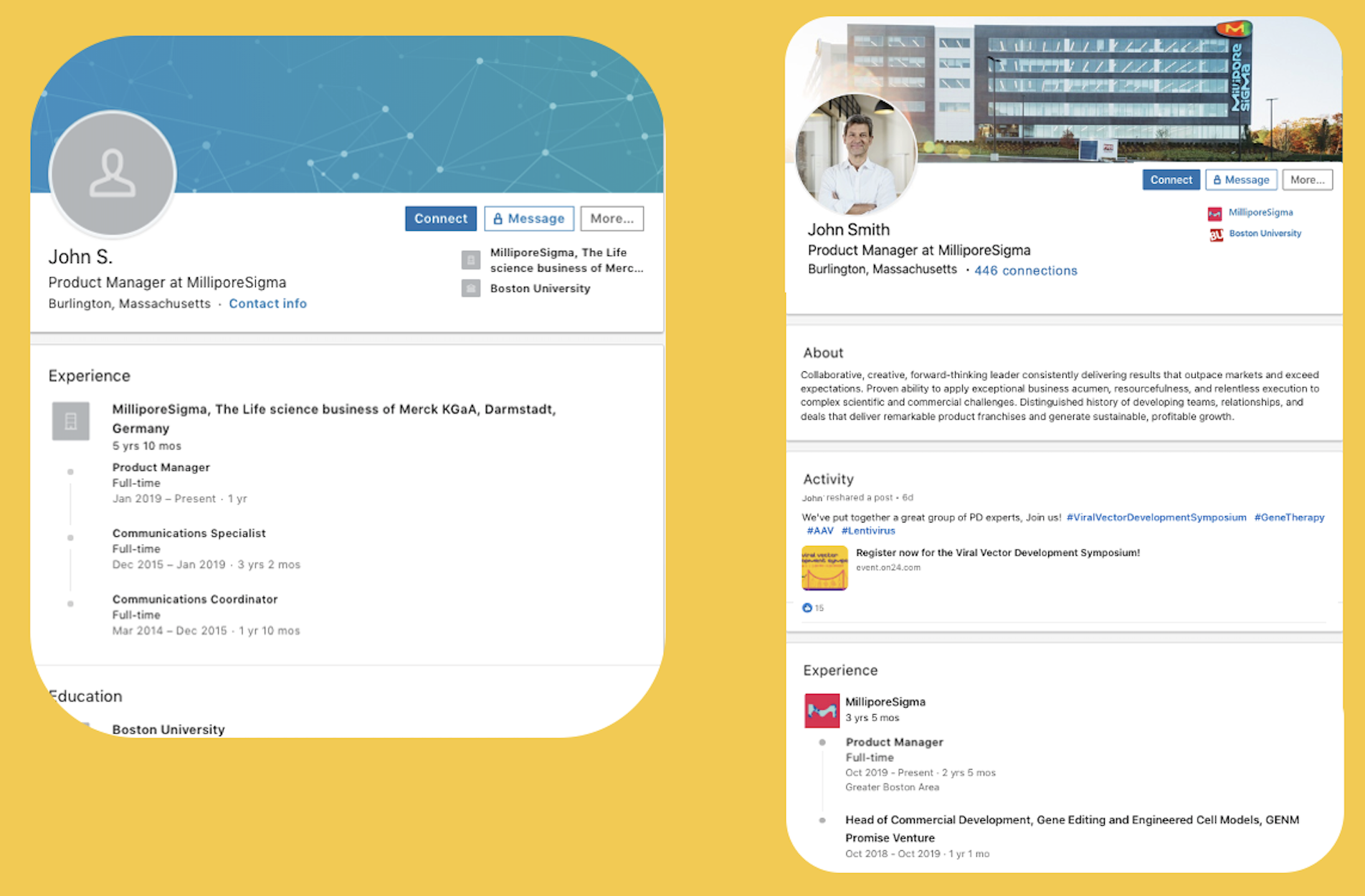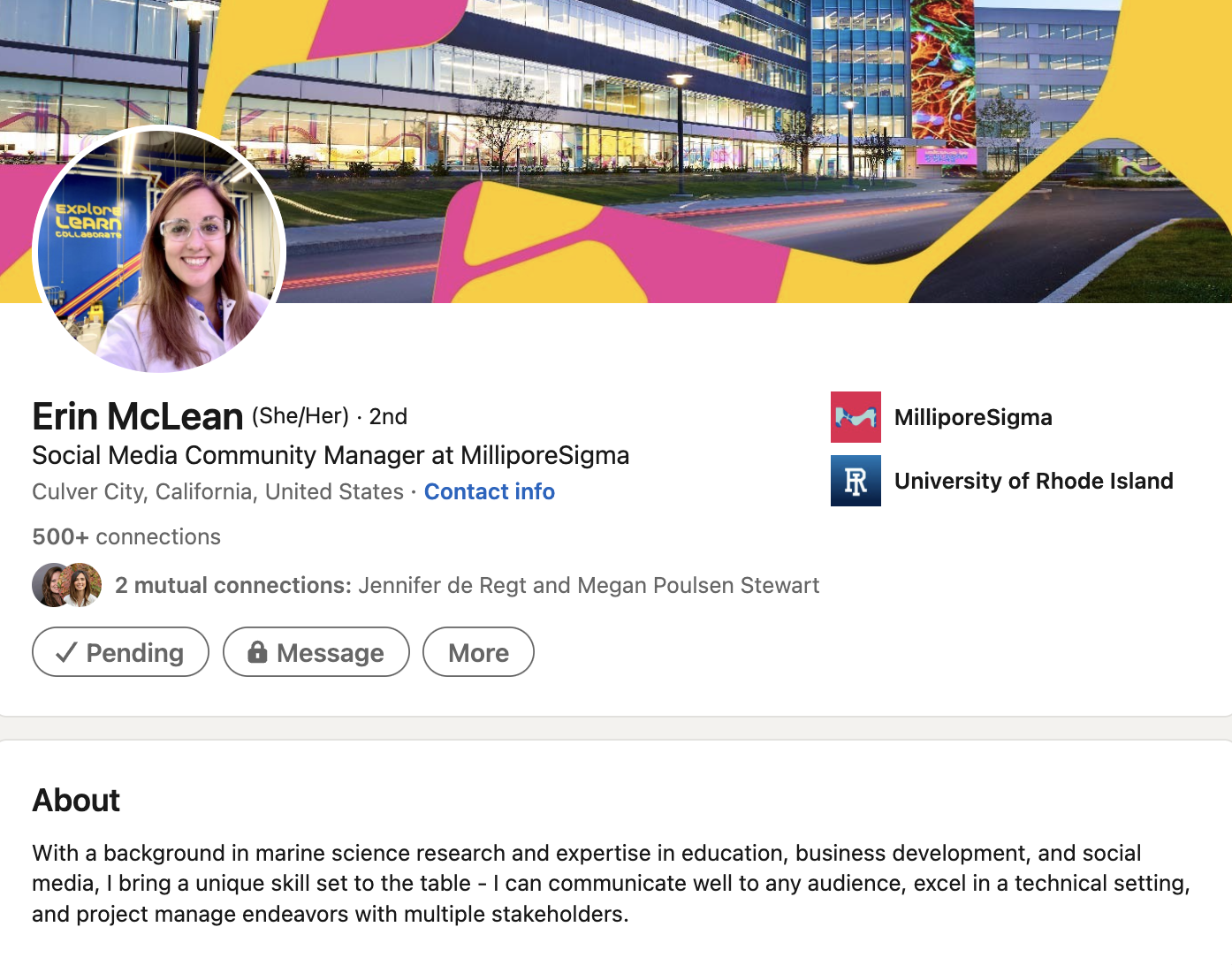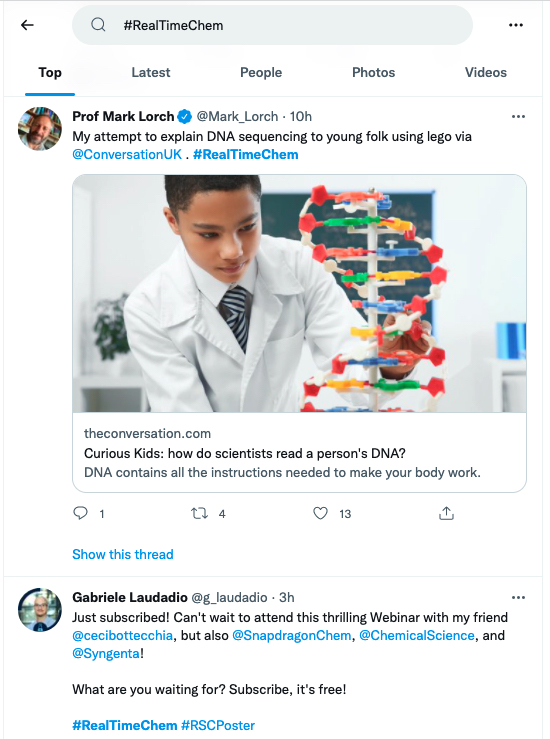At its very core, science is a collaborative enterprise. In our field, we frequently speak about research groups, co-authors, and networking events at conferences.
Yet some scientists are still hesitant to use social media to build their digital professional brands.
I’m here to tell you why everyone needs to develop their digital professional brand though — even scientists.
Why You Need a Digital Professional Brand
The phrase “digital professional brand” may suggest images of corporate marketing professionals, but everyone can benefit from establishing their voice online — scientists included.
After all, digital platforms like social media are often where cutting-edge conversations and collaboration opportunities flourish.
You’ve accomplished a lot and built a successful career, so your stakeholders should see your achievements reflected online. Plus, you want others to view you as a source of trusted information.
Your work speaks for itself, of course, but being active on social media and participating in relevant conversations online allows you to reinforce your digital professional brand and expand your network.
Over the past two years of the pandemic, we’ve seen the value of that digital professional brand increase — rather than relying on in-person interactions to build our brand, we’ve all had to shift reputation building online. Even post-pandemic, digital tools like video calling and online collaboration aren’t going away.
Now, more than ever, your online brand works together with your offline brand.
There are two major activities involved in building your digital professional brand:
- Present yourself fully and accurately online by updating your Linkedin information so that it reflects where you’ve been in your career and where you want to go.
- Contribute to important conversations in your field by posting relevant articles and engaging with others in your social network.
How Can You Make a Good Digital First Impression?
When you go to a conference or publish a new paper, one of the first things people will do to learn more about you is a Google search.
When they search, they should find a digital professional brand that paints an accurate, complete picture that you’re excited about. In fact, nearly half of U.S. adults Google someone before doing business with them.
Your LinkedIn profile is likely the number one result when someone enters your name and your company or university, so it makes sense to start there when building your brand.
Let’s go through an example using the following screenshots for the fictional John Smith:

On a very basic level, if you knew nothing else about the two profiles in the above photo, who would you rather speak to about a potential collaboration?
Many would pick the profile on the right because, at first glance, his profile communicates that he cares about his digital professional brand — and that he likely has the expertise to back it up.
Looking further at this fictional profile, we can see the great digital first impression established here.
A potential collaborator can look at the information contained in John’s complete profile and easily learn more about him. Without this complete profile information, it would be difficult to ascertain if his research aligns, and the potential collaborator may not bother reaching out at all.
This is what your brand is all about: to present yourself as the thought leader, expert, and experienced collaborator that you are.
How to Start Building a Digital Professional Brand
There’s no “easy button” to building your digital professional brand, but LinkedIn is a great place to start.
Optimize your LinkedIn profile.
Like the example discussed above, you’ll want to make sure your Linkedin profile is active, up-to-date, and does a good job showcasing all your accomplishments.

What to include in your profile:
- Professional headshot. People like to put a face with a name.
- Current employer. Connecting to your current company or university’s page will help more people find your profile.
- Details for each listed role. A LinkedIn profile isn’t a CV, so there’s more freedom to express yourself. Include the activities you were involved in while at your various roles, as well as your accomplishments. And scientists, it’s a great idea to also list the lab techniques and skills you applied in each position.

What to do:
- Check your privacy settings. If your goal is to grow your network, investigate your privacy settings to understand what you’re sharing with the world at large.
- Connect. Find people both within your research circle and externally within your field at large. One great thing about Linkedin is that when you send the initial invitation to connect with someone, you can provide a note that adds context. For example, if you’re attending a conference and want to talk to someone on the list of speakers, you can send that person a connection request and ask them to meet with you for 5-10 minutes during the event.
- Start engaging. Like and comment — and reshare — other people’s posts. This is that crucial conversation aspect of social media, and it’s how you stay fresh, relevant, and up to date on what’s going on.
Share content.
Get into a habit of sharing interesting and relevant information on your various social media accounts, especially LinkedIn.
Now that your Linkedin profile reflects your digital professional brand, the scientific community can better see what you and your research are all about!
Many scientists are active on Linkedin and Twitter, so that’s what the following tips will be based on, but Instagram and Tiktok are quickly becoming popular as well.
Where can scientists find content to share?
It may sound daunting to think about adding social media to your already full plate. But there are several good resources to find content to share with your personal network:
- Scientific journals: You read these papers anyway, so why not summarize your thoughts on a few of them for social media?
- Industry news sites: Depending on the industry, sites like FiercePharma and ScienceDaily are great aggregators of news.
- Within your company or university: Some workplaces have an employee advocacy platform like EveryoneSocial to aggregate great content all in one place.
- Twitter: There are many science-focused accounts that curate streams of relevant content, contribute to discussions, and post relevant information. You can also find cutting-edge research in your field on Twitter via online conferences or linked by a common hashtag like #RealTimeChem. The scientific conversations that happen on Twitter are much like the ones that occur in the hallways of a convention center.

What if I want to create my own content?
You don’t have to share only articles to contribute to discussions – you can also post directly about your own work. This can include commiserating about an experiment that didn’t quite work, sharing cool pictures and videos from the lab, disseminating a recent paper, or participating in science communication activities.
Most importantly, though, social media is about conversations. It’s another venue to talk to each other, solve problems, and share techniques.
Here are some content ideas to help you get started:
- Share a link to a recent paper and add your opinion about the key findings.
- Write down your thoughts on a common lab technique and how to improve it.
- Snap a picture of an experiment that you’re working on in the lab, or your work-from-home setup.
- Ask a question to your followers about a tricky situation you’re trying to troubleshoot.
- Link to a news article about a promising aspect of your field.
Enjoy building your digital professional brand on social media, and go forth and build relationships with your future collaborators! The next great idea is only a conversation away.















